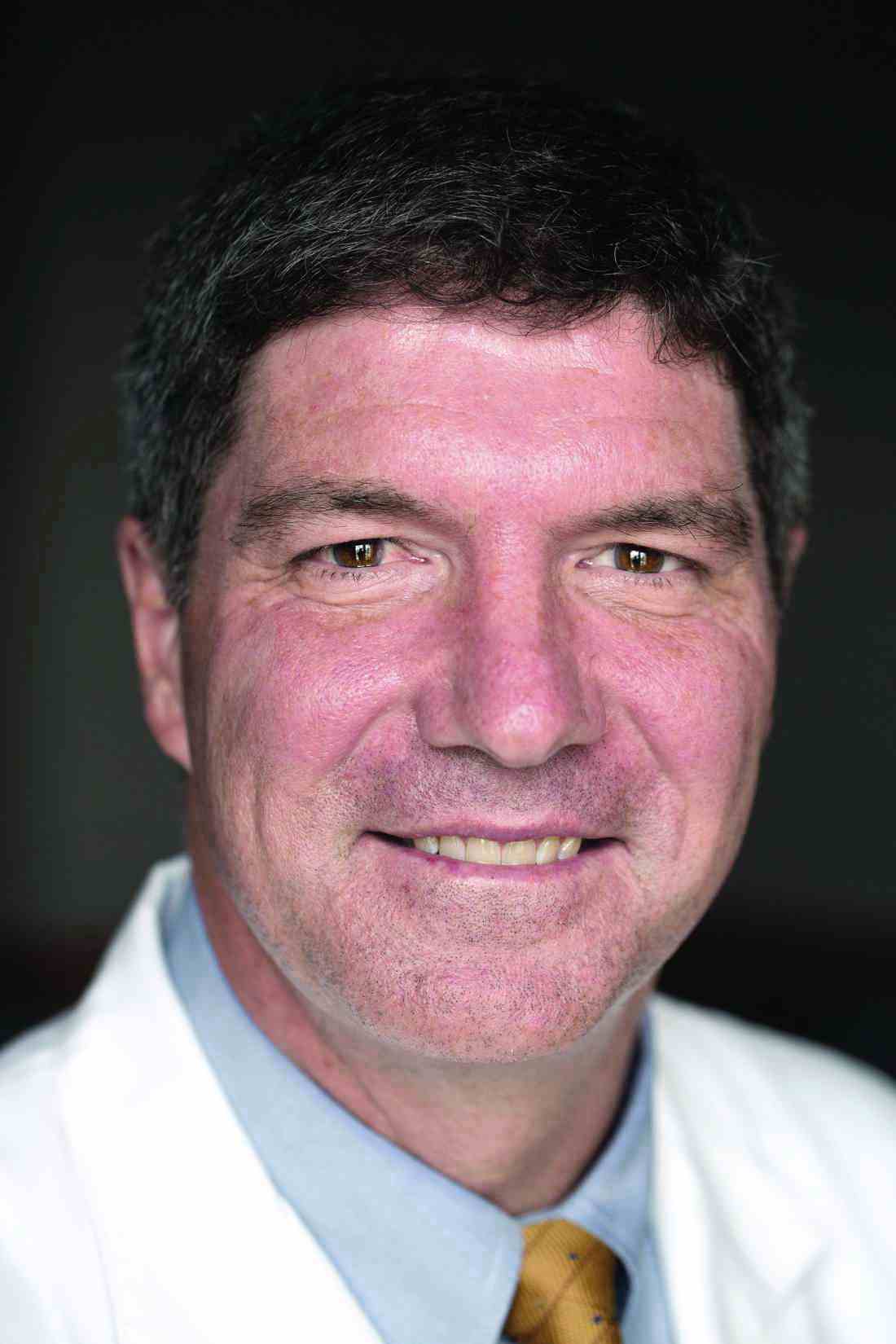User login
The idea of using bioengineered human acellular vessels for dialysis vascular access used to be a pie-in-the-sky notion, but research presented today will demonstrate just how close they are to becoming a realistic option.
Dr. Jeffrey H. Lawson will present results from two Phase II single-arm trials of bioengineered human acellular vessels for dialysis access in 60 patients with end-stage renal disease conducted in six hospitals: three in the United States and three in Poland. His presentation is entitled “Tissue Engineered Blood Vessels for Arterial Bypass and Dialysis Access: Midterm Results n Patients.” To date, the early clinical experience with these vessels “suggests that they are safe to implant as a dialysis access vessel and lower leg bypass graft,” said Dr. Lawson, chief medical officer at Humacyte and professor of surgery and pathology in the department of surgery at Duke University, Durham, N.C. “They enjoy enduring patency, tolerate needed interventions, appear durable and have a low risk of infection.”
The researchers observed that during 82 patient-years of follow-up, only one vessel became infected. The vessels had no dilatation and rarely had postcannulation bleeding. At 6 months, 63% of patients had primary patency, 73% had primary assisted patency, and 97% had secondary patency, with most loss of primary patency because of thrombosis. At 1 year, 28% had primary patency, 38% had primary assisted patency, and 89% had secondary patency. “Following implantation into patients, the human acellular vessel (HAV) appears to completely repopulate with the host’s (recipient’s) own vascular tissue,” Dr. Lawson said. “The vessel is filled with cells that look like vascular smooth muscle cells and the implanted vessel is lined with endothelial cells from the host, suggesting that the manufactured acellular vessel becomes repopulated with the hosts own cells making it part of their own body. I will also be discussing some unpublished work that we have done for lower leg arterial bypass work in 20 patients to date.”
Dr. Lawson acknowledged that the Phase II experience at a few clinical sites is a limitation of the current analysis. “These findings need to be confirmed and validated in a large Phase III clinical trial, which is now underway,” he said.
Session 60
“New Developments in Arterial Grafts; Stents and Stent-Grafts; Concepts and Techniques to Improve Their Use and Results”
Thursday, 1:54 p.m.– 3:24 p.m.
Grand Ballroom East, 3rd Floor
The idea of using bioengineered human acellular vessels for dialysis vascular access used to be a pie-in-the-sky notion, but research presented today will demonstrate just how close they are to becoming a realistic option.
Dr. Jeffrey H. Lawson will present results from two Phase II single-arm trials of bioengineered human acellular vessels for dialysis access in 60 patients with end-stage renal disease conducted in six hospitals: three in the United States and three in Poland. His presentation is entitled “Tissue Engineered Blood Vessels for Arterial Bypass and Dialysis Access: Midterm Results n Patients.” To date, the early clinical experience with these vessels “suggests that they are safe to implant as a dialysis access vessel and lower leg bypass graft,” said Dr. Lawson, chief medical officer at Humacyte and professor of surgery and pathology in the department of surgery at Duke University, Durham, N.C. “They enjoy enduring patency, tolerate needed interventions, appear durable and have a low risk of infection.”
The researchers observed that during 82 patient-years of follow-up, only one vessel became infected. The vessels had no dilatation and rarely had postcannulation bleeding. At 6 months, 63% of patients had primary patency, 73% had primary assisted patency, and 97% had secondary patency, with most loss of primary patency because of thrombosis. At 1 year, 28% had primary patency, 38% had primary assisted patency, and 89% had secondary patency. “Following implantation into patients, the human acellular vessel (HAV) appears to completely repopulate with the host’s (recipient’s) own vascular tissue,” Dr. Lawson said. “The vessel is filled with cells that look like vascular smooth muscle cells and the implanted vessel is lined with endothelial cells from the host, suggesting that the manufactured acellular vessel becomes repopulated with the hosts own cells making it part of their own body. I will also be discussing some unpublished work that we have done for lower leg arterial bypass work in 20 patients to date.”
Dr. Lawson acknowledged that the Phase II experience at a few clinical sites is a limitation of the current analysis. “These findings need to be confirmed and validated in a large Phase III clinical trial, which is now underway,” he said.
Session 60
“New Developments in Arterial Grafts; Stents and Stent-Grafts; Concepts and Techniques to Improve Their Use and Results”
Thursday, 1:54 p.m.– 3:24 p.m.
Grand Ballroom East, 3rd Floor
The idea of using bioengineered human acellular vessels for dialysis vascular access used to be a pie-in-the-sky notion, but research presented today will demonstrate just how close they are to becoming a realistic option.
Dr. Jeffrey H. Lawson will present results from two Phase II single-arm trials of bioengineered human acellular vessels for dialysis access in 60 patients with end-stage renal disease conducted in six hospitals: three in the United States and three in Poland. His presentation is entitled “Tissue Engineered Blood Vessels for Arterial Bypass and Dialysis Access: Midterm Results n Patients.” To date, the early clinical experience with these vessels “suggests that they are safe to implant as a dialysis access vessel and lower leg bypass graft,” said Dr. Lawson, chief medical officer at Humacyte and professor of surgery and pathology in the department of surgery at Duke University, Durham, N.C. “They enjoy enduring patency, tolerate needed interventions, appear durable and have a low risk of infection.”
The researchers observed that during 82 patient-years of follow-up, only one vessel became infected. The vessels had no dilatation and rarely had postcannulation bleeding. At 6 months, 63% of patients had primary patency, 73% had primary assisted patency, and 97% had secondary patency, with most loss of primary patency because of thrombosis. At 1 year, 28% had primary patency, 38% had primary assisted patency, and 89% had secondary patency. “Following implantation into patients, the human acellular vessel (HAV) appears to completely repopulate with the host’s (recipient’s) own vascular tissue,” Dr. Lawson said. “The vessel is filled with cells that look like vascular smooth muscle cells and the implanted vessel is lined with endothelial cells from the host, suggesting that the manufactured acellular vessel becomes repopulated with the hosts own cells making it part of their own body. I will also be discussing some unpublished work that we have done for lower leg arterial bypass work in 20 patients to date.”
Dr. Lawson acknowledged that the Phase II experience at a few clinical sites is a limitation of the current analysis. “These findings need to be confirmed and validated in a large Phase III clinical trial, which is now underway,” he said.
Session 60
“New Developments in Arterial Grafts; Stents and Stent-Grafts; Concepts and Techniques to Improve Their Use and Results”
Thursday, 1:54 p.m.– 3:24 p.m.
Grand Ballroom East, 3rd Floor

